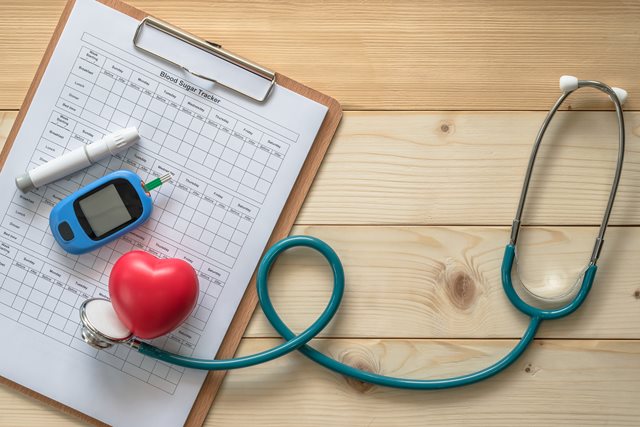Why is whole-wheat pasta that is properly cooked (until it is al dente and still has a bite) better for you than overcooked pasta? Well, at least one reason has to do with the glycemic index (GI). This measures how much carbohydrate-rich food raises your blood sugar (glucose) levels compared to a standard food like white bread. Properly cooked pasta has a low GI, while overcooked pasta is a high-GI food, which can raise your blood sugar levels rapidly.
It has been more than 40 years since University of Toronto researchers Dr. David Jenkins, and Dr. Thomas Wolever PhD developed the idea of the glycemic index. While it is vital for people living with diabetes, experts believe that choosing healthy carbohydrates is important for everyone. According to research presented at the International Scientific Consensus Summit on Glycemic Index, Glycemic Load and Glycemic Response in Italy, eating a diet filled with too many quickly digested carbohydrates, or high-GI foods (such as white bread or bagels, and instant rice), is linked to a variety of health problems including the development of type 2 diabetes, obesity, coronary heart disease, certain cancers and eye diseases.
Cayla Runka, people affected by diabetes (PAD) knowledge & connection manager at Diabetes Canada, says,
A low-GI diet has been linked with improved blood sugar and blood cholesterol levels, which is good for people with type 1 or type 2 diabetes.
She also points to a low-GI diet’s ability to help you feel full or satisfied after eating. And if you are more satisfied after a meal, of course, you are less likely to overeat, making for easier control of weight and blood sugar. Runka adds, “It is essential to keep in mind that even though a food may have a low GI, portions are still important.”
Lighten your load
So does that mean you have to avoid high-GI foods? Not necessarily. In fact, according to Dr. Wolever, “there is no need to cut all high-GI foods from your diet. The idea is to exchange some high-GI foods for low-GI ones, or include some low-GI foods with high-GI choices.” This concept, known as the glycemic load (GL), takes into account how much of a high-GI food you consume. For example, if you eat a small piece of a bagel, it will have a lower GL than if you have a large portion, which means it will not raise your blood sugar as much.
Another example? Potatoes are nutritious, but they have a high GI. Dr. Wolever says “Did you know that eating potatoes cold, say, in potato salad, reduces their GI by about 40 per cent, so they become a low-GI food?” He also suggests a soup containing potatoes, vegetables and beans (a low-GI food) as a good example of mixing high- and low-GI foods.
Measure your progress
Checking your blood sugar after a meal can provide valuable insight into how your food choices may be affecting your diabetes control. The Diabetes Canada 2018 Clinical Practice Guidelines for the Prevention and Management of Diabetes in Canada suggest that self-monitoring of blood glucose levels be based on individual needs—meaning your monitoring schedule may be different from someone else’s.
At the conference, scientists agreed that people with diabetes whose A1C (a measure of average blood sugar levels over the past two or three months) is not on target may find it more beneficial to measure their blood sugar 1½ hours after a meal rather than measuring it after two hours. However, says Runka, always work with a member of your diabetes healthcare team to learn the best time to check your blood sugar at home, so that you know the effect that your lifestyle has on your levels.
Foods that work for you
Here are four ways to lower your blood sugar levels and glycemic load:
1. Choose longer-cooking grains instead of instant or short-cooking ones. For example, large flake or rolled oats have a low GI of around 50, while instant oats have a value of 83. Runka says, “Choosing a high-GI cereal like cornflakes will produce a greater rise in blood sugar than a low-GI cereal like oatmeal; however, the addition of protein and fibre can help reduce that load. So if you enjoy cornflakes, be sure to add milk, some high-fibre berries and a few tablespoons of nuts or seeds to balance the bowl. Simple changes like this can make a big difference.”
2. Select coarse breads with grains that you can see rather than light fluffy varieties. Even if the light fluffy breads are whole grain, they will still have a higher GI that can boost your blood sugar levels.
3. Add acidic foods, such as various vinegars and lemon juice, to meals. Research shows that when you use these types of foods at a meal, your blood sugar readings following the meal will be lower. They will also make your meals tastier. For example, include a splash of vinegar in soups and stews, use an oil and vinegar dressing on salads or marinated vegetables, and squeeze lemon juice on fish and vegetables.
4. Use low-GI pulses—such as dried peas and beans—at meals, especially when the meal includes a high-GI food. For example, if you choose mashed potatoes, have only a small portion and toss some chickpeas into a salad.
Making smart choices
In general, most high-fibre fruits and vegetables have a low GI. Choose low- and medium-GI foods more often. When enjoying high-GI choices, remember to keep portions in check. Use this chart as a guide to help you make healthier choices; for more options, visit The Glycemic Index (GI).
| Low GI | Medium GI | High GI | |
| Breads |
• 100% stone-ground whole wheat • Heavy mixed grain |
• Whole wheat • Rye |
• White • Kaiser roll |
|
Cereal |
• All Bran • Oat Bran |
• Grapenuts • Oatmeal |
• Bran Flakes • Rice Krispies |
|
Grains |
• Pasta/noodles • Parboiled or converted rice |
• Brown rice • Couscous |
• Short-grain rice |
| Other |
• Sweet potato • Legumes (lentils, chickpeas, kidney beans, etc.) |
• Potato, new/white • Popcorn |
• French fries • Soda crackers |
Recipes
Here are some tasty dishes to savour that have a low GI.
Chickpea, Roasted Red Pepper, Tomato & Mint Salad
Chickpeas and other assorted legumes have a low GI. They are also top-notch sources of soluble fibre—the type that plays a beneficial role in both regulating blood sugar and lowering blood cholesterol. Not only is this salad nutritious, it is delicious!
1 can (19 oz./540 mL) chickpeas, rinsed and drained (or 2 cups/500 mL cooked)
1 cup (250 mL) diced roasted red peppers (about 3 peppers)
⅔ cup (150 mL) diced fresh tomatoes
⅓ cup (75 mL) chopped red onion
⅓ cup (75 mL) chopped fresh mint
3 tbsp (45 mL) extra virgin olive oil
2 tbsp (25 mL) sherry vinegar
1 tbsp (15 mL) chopped garlic
Salt and freshly ground pepper
Combine first five ingredients in a medium bowl. Mix together oil, vinegar and chopped garlic; blend into vegetable mixture. Season to taste with salt and pepper.
Refrigerate for at least 4 hours to allow flavours to blend.
Makes 6 servings.
Nutritional breakdown per serving: 24 g carbohydrate, 5 g protein, 8 g total fat, 1 g saturated fat, 5 g fibre, 243 mg sodium, 185 calories
© Rosie Schwartz
Breakfast Oat Pudding
Reminiscent of rice pudding, this wholesome porridge made with steel-cut oats is ideal served hot or cold for breakfast or as a snack or dessert. The recipe is from Diabetes Prevention & Management Cookbook by Johanna Burkhard and Barbara Allan, published in co-operation with the Canadian Diabetes Association (Robert Rose). If you are making it ahead or preparing extras for another morning’s breakfast, stir in additional milk or water when reheating porridge to give it a creamy consistency.
3½ cups (875 mL) low-fat (1%) milk
1 cup (250 mL) water
1 cup (250 mL) steel-cut oats
3 tbsp (45 mL) ground flaxseeds
2 tbsp (25 mL) toasted unsalted sunflower seeds, chia seeds or hemp
1 tsp (5 mL) ground cinnamon
Stevia extract or artificial sweetener (optional)
In a large saucepan, bring 3 cups (750 mL) of the milk plus the water to a boil over medium-high heat. Stir in oats. Reduce heat to low and cover, leaving lid ajar, and simmer, stirring occasionally and removing any milk scum as it forms, for 20 minutes or until thickened. Remove from heat.
Stir in remaining milk plus flaxseeds, sunflower seeds and cinnamon. Sweeten with Stevia to taste, if desired. Serve either hot or cold. Pudding thickens as it cools. Add more milk or water to thin to desired consistency.
Makes 4 servings.
Nutritional breakdown per serving: 41 g carbohydrate, 15 g protein, 10 g total fat, 2 g saturated fat, 7 g fibre, 99 mg sodium, 306 calories
© robertrose.ca
Roasted Mushroom & Sun-Dried Tomato Linguine
This recipe offers a change-of-pace pasta that is perfect for guests but simple enough for an everyday dinner. If the sun-dried tomatoes are salty, change the water they are soaking in and soak them again in fresh hot water to lower sodium counts.
Vegetable oil cooking spray
1 lb. (500 g) assorted mushrooms, sliced
1 tbsp (15 mL) balsamic vinegar
4 tsp (20 mL) extra virgin olive oil
½ lb. (250 g) linguine, preferably whole wheat
1 tbsp (15 mL) chopped garlic
½ cup (125 mL) sun-dried tomatoes, soaked in boiling water, then drained
Salt and freshly ground pepper
2 bocconcini balls (fresh mozzarella), cut into ¼-inch/0.6-cm cubes
⅓ cup (75 mL) freshly grated Parmesan cheese
Preheat oven to 425°F (230°C).
Prepare a 9 x 13 x 2-inch (22 x 32 x 5-cm) baking pan by spraying with cooking spray. Place mushrooms in pan and toss with vinegar and 2 teaspoons (10 mL) olive oil. Roast mushrooms in oven for 15 to 20 minutes or until they are tender and only a small amount of liquid remains. Set aside. Mushrooms can be made earlier in the day and refrigerated, covered, until needed.
Cook pasta in plenty of boiling water until al dente (just tender). Drain thoroughly.
Heat remaining oil in a large skillet over medium-low heat. Add garlic and sauté for 2 minutes, being careful not to brown garlic. Add mushrooms and tomatoes, and increase heat to medium-high. Cook, stirring occasionally, for 5 minutes. Season to taste with salt and freshly ground pepper. Add pasta and toss to mix. Slowly add bocconcini so that cheese is mixed throughout. Serve immediately with freshly grated Parmesan.
Makes 6 servings.
Nutritional breakdown per serving: 34 g carbohydrate, 12 g protein, 7 g total fat, 3 g saturated fat, 6 g fibre, 230 mg sodium, 225 calories
© Rosie Schwartz
Did you know?
Diabetes Canada has a range of 7-day healthy meal plans that you’ll love. Explore our plans, which are designed to help you enjoy delicious meals that meet your dietary needs. Visit Meal Planning for more information.
This updated article originally appeared in Diabetes Dialogue.
Related Content

Nutrition
Learn more about how to incorporate good-for-you foods into your meals.
Get started About Nutrition
Tools & resources
Take charge of your health with tools and resources from Diabetes Canada.
Get started About Tools & resources
Virtual learning
Learn more diabetes management tips and tricks by checking out one of our many options.
Get started About Virtual learning